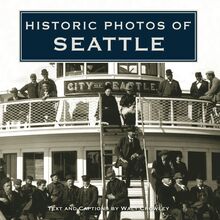Historic Photos of Long Island , livre ebook
204
pages
English
Ebooks
2008
Vous pourrez modifier la taille du texte de cet ouvrage
Obtenez un accès à la bibliothèque pour le consulter en ligne En savoir plus
Découvre YouScribe en t'inscrivant gratuitement
Découvre YouScribe en t'inscrivant gratuitement
204
pages
English
Ebooks
2008
Vous pourrez modifier la taille du texte de cet ouvrage
Obtenez un accès à la bibliothèque pour le consulter en ligne En savoir plus
Publié par
Date de parution
01 novembre 2008
Nombre de lectures
0
EAN13
9781618584038
Langue
English
Poids de l'ouvrage
7 Mo
The largest island in the continental United States, Long Island comprises Brooklyn, Queens, Nassau, and Suffolk counties. With a rich history that has included American Indian tribes such as the Massapequa, Shinnecock, and Quogue, among others; colonists from England and the Netherlands; and immigrants who arrived by way of Ellis Island; Long Island thrives today on its wealth of industry, agriculture, natural beauty, and the contributions of its nearly eight million residents. Those very attributes are showcased in this volume, Historic Photos of Long Island.
From the lighthouse at Montauk, to the growth of the Long Island Rail Road, to the factories of Long Island City, the breadth, contrasts, and vitality of the Island through a century of its life shine forth in the black-and-white images collected here. Windmills and tide mills, potatoes and oysters, aviators and fishermen—all are a part of the Island’s history, and all are represented vividly among the nearly 200 images seen in Historic Photos of Long Island.
Publié par
Date de parution
01 novembre 2008
Nombre de lectures
0
EAN13
9781618584038
Langue
English
Poids de l'ouvrage
7 Mo
HISTORIC PHOTOS OF
LONG ISLAND
T EXT AND C APTIONS BY J OE C ZACHOWSKI
Orient, New York, was initially called Poquatuck, after the American Indian tribe that lived there, then was renamed Oyster Ponds. In 1836 the settlement was separated into two communities, with Orient becoming the name of the easternmost point. This late-nineteenth-century photo shows the layout of some of the ponds for which the town was once named.
HISTORIC PHOTOS OF
LONG ISLAND
Turner Publishing Company
200 4th Avenue North Suite 950
Nashville, Tennessee 37219
(615) 255-2665
www.turnerpublishing.com
Historic Photos of Long Island
Copyright 2009 Turner Publishing Company
All rights reserved.
This book or any part thereof may not be reproduced or transmitted in any form or by any means, electronic or mechanical, including photocopying, recording, or by any information storage and retrieval system, without permission in writing from the publisher.
Library of Congress Control Number: 2008904904
ISBN-13: 978-1-59652-498-9
Printed in China
09 10 11 12 13 14 15 16 17-0 9 8 7 6 5 4 3 2 1
C ONTENTS
A CKNOWLEDGMENTS
P REFACE
H ARD W ORK AND R AILROADS (1865-1899)
A UTOS AND A IRPLANES (1900-1939)
W ORLD W AR II AND P OSTWAR P ROSPERITY (1940-1960 S )
N OTES ON THE P HOTOGRAPHS
This is how Huntington s Main Street looked in the late 1800s. Huntington is on the Island s north shore in Suffolk County. It was settled in 1653 when Richard Holbrook, Robert Williams, and Daniel Whitehead purchased a plot of land from the Matinecock Indians then turned it over to a different group of settlers. Huntington became an officially recognized town on March 7, 1788.
A CKNOWLEDGMENTS
With the exception of cropping images where needed and touching up imperfections that have accrued over time, no other changes have been made to the photographs in this volume. The caliber and clarity of many photographs are limited to the technology of the day and the ability of the photographer at the time they were made.
--------
This volume, Historic Photos of Long Island , is the result of the cooperation and efforts of many individuals, organizations, and corporations. It is with great thanks that we acknowledge the valuable contribution of the following for their generous support:
The Brooklyn Historical Society
Freeport Memorial Library
Library of Congress
New York State Archives
Our pets become an integral part of our lives. My cat certainly was. Her wry smile and wise eyes were a comfort in bad times. I will miss her most while doing this; she loved walking on the keyboard.
P REFACE
What s in a name? In the case of Long Island, both words are key. Long Island is long-118 miles. Its widest distance is 23 miles. And it is an island, the largest in the continental United States. Long Island is comprised of four counties, two that are boroughs of New York City (Queens and Brooklyn) and two that contain suburbs of the city (Nassau and Suffolk). This collection of historic images reflects all four, including sectors of Long Island that are now deep within the borders of New York City. Amazingly, Long Island hasn t sunk under the weight of its nearly eight million people. Though it is part of New York State, that hasn t stopped some from suggesting it should be the fifty-first state of the Union. It certainly has everything to thrive and survive on its own: industry, agriculture, natural beauty, and its most important attribute, its inhabitants.
As is emphasized by town names like Matinecock, Massapequa, and Quogue, American Indians inhabited the Island when the European colonists first arrived, and their impact on its culture has been lasting. The Dutch were among the Island s earliest settlers, spreading out from the growing town on the smaller island of Manhattan, while New England Puritans crossed Long Island Sound from Connecticut and Massachusetts. All embodied those Yankee ideals marked by hard work and religious conviction.
The British eventually dominated on Long Island, commanding trade and settlement. The farmland was rich and the sea was plentiful, with bountiful harvests of things common and exotic, potatoes and oysters. With sheltered harbors available, shipping became dominant both for building and for commerce. The area was settled slowly, and those who wanted a change and challenge found it a paradise. As was the case with other profitable colonies, people on Long Island had divided loyalties, and when the first shots were fired in the Revolutionary War, rebel and loyalist were firmly entrenched.
Commander George Washington had the Declaration of Independence read aloud to his troops on Long Island in that famous July of 1776. A defining battle erupted on the Island a month later. England won that round and retained the Island for the balance of the war, but the colonial militias learned how to fight delaying actions and secure proper retreats, which bode well for later battles. When the Revolution was won, loyalists left for points north, and Long Island went about growing and becoming stronger as an important part of New York State.
New York City in the nineteenth century was the center of American commerce. The wealthy and powerful of the Gilded Age-names such as Morgan, Vanderbilt, and Roosevelt-began to see Long Island as a place to escape the grime of the city and to build lavish homes and estates. Nassau and Suffolk counties still boast some of the most expensive homes in the Northeast. Less affluent folk also began to appreciate Long Island s riches, and a constant flow of people and business expanded its population, a process accelerated by the railroads, which were shrinking distances between points on the Island.
At the turn of the century, with the influx of immigrants from Europe, the jump from Ellis Island to Long Island was inevitable as well as profitable. New life meant new business, new business meant more business, and more business meant more people. All forms of work were available-skilled and unskilled; shipping, farming, transportation-and with prosperity rising for many, something called leisure time entered the vocabulary, and Long Island s beaches, harbors, and forests were there to enjoy.
A relatively constant population growth continued throughout the succeeding decades up to World War II. Long Island went on a war footing in the 1940s and was a center for aviation technology, with the army, navy, and marines all having planes built there. When the war was over-and when most thought growth would be static-the modern suburb was born, and Long Island became its drawing board.
Taking advantage of the GI Bill, servicemen received an education, found profitable employment, and qualified for a mortgage. As varied businesses established bases for industry and technology on Long Island, the needed workforce was in place. Long Island grew from the 1950s to the 1990s, and while it did suffer some setbacks, tradition and an extremely strong sense of community permeate Long Island today.
Notables of Long Island have included the Baldwin family of actors (Alec, Daniel, Stephen, William); Tony Danza; Rosie O Donnell; Captain Kangaroo (Bob Keeshan); musicians Billy Joel, Dee Snider (of the band Twisted Sister), and LL Cool J; star athletes Boomer Esiason and Carl Yastrzemski; and writers Doris Kearns Goodwin and Walt Whitman.
In the realm of fictional Long Island, the Hardy Boys, Frank and Joe, do their youthful sleuthing in Bayport; the shark in Peter Benchley s Jaws plies the waters off Long Island Sound; the Marx Brothers film Animal Crackers is set on Long Island; and, of course, Ray Romano s television family lives in Lynbrook.
- Joe Czachowski
The Long Island Rail Road began operations in 1836 to open the vastness of Long Island to the rest of New York State. The LIRR established the Smithtown and Port Jefferson line, a 59.4-mile trip to and from New York City, in 1868. Here, in 1878, a locomotive is pulling into the Port Jefferson Station.
H ARD W ORK AND R AILROADS
(1865-1899)
By the mid-1800s, many towns on Long Island were well established. Religious tolerance was always fostered there. Presbyterians, Jews, Episcopalians, and even the beleaguered Quakers and Catholics found homes. The first wave of immigrants from Europe who came through New York City to Long Island found comfort in established congregations and courage to found new ones. Traditional employment options, such as farming, were abundant. The Island had fertile potato farms. Fishing for shellfish and Atlantic staples such as cod was also a profitable way of life.
While employment was always available, markets were distant. The single most important development on Long Island was the railroad. On April 24, 1834, a charter was granted for the Long Island Rail Road Company (LIRR). Ferry boats had been the usual means of transportation and would remain important, especially with the likes of Cornelius Vanderbilt as owners, but rail in conjunction with ferries became more important. Vanderbilt would eventually become a member of the LIRR Board of Directors. Major D. B. Douglass was the pioneer for this new mass transit system. While most of the rail traffic centered around the outskirts of New York City, additional track was laid to the hinterlands.
Year by year, mile by mile, the LIRR would expand: Mineola to Glen Head in 1865, Glen Cove in 1867, Locust Valley in 1869, and on and on. Every mile meant more people and commerce. Competition ensued from the likes of the Flushing and Central railroads, but one way or another, compromises and mergers came about. Austin Corbin s stint as head of the LIRR from 1881 until his death in 1896 ensured its eventual success. Sleepy hamlets did exist, and the pace of life was still slow in the outlying areas, but things were changing. Bridges and tunnels were being constructed, and the mix of the Island s productivity with New York City s financial muscle was too potent to ignore.
Traditional va














